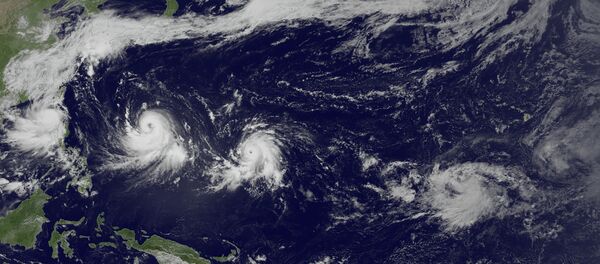On Tuesday eveningb the typhoon was no longer a super typhoon, but still the equivalent of a Category Four hurricane, with sustained winds of 210 kph (130 mph) as well as gusts of wind which were even stronger.
Medical @ISS_Research & Russian spacesuit checks as #ISSCrew flies over #TyphoonSoudelor… http://t.co/euETzoBtDM pic.twitter.com/L9A0eHqRLW
— Intl. Space Station (@Space_Station) 4 августа 2015
It is expected to be a Category Four or Three storm when it hits land later this week; high pressure above Japan is pushing the typhoon towards Japan's southwestern Ryukyu islands, Taiwan, and the southeast China.
It is expected to hit the Ryukyu Islands on Friday, Taiwan on Friday night, and southeast China on Saturday.
Typhoon #Soudelor is expected to bring flooding to Taiwan later this week with 500-700mm of rain forecast https://t.co/CbIYMWBU4y
— Met Office (@metoffice) 4 августа 2015
The typhoon caused significant devastation when it hit the island of Saipan in the western Pacific on Sunday, where a 'state of disaster and significant emergency' was declared.
Saipan, the island my dad is from, got hit by Typhoon Soudelor last night. Hundreds are homeless. #PrayersForSaipan pic.twitter.com/4E7axt7gTr
— Troy Joseph (@TheTroyJoseph) 4 августа 2015
According to the authorities, it will take three or four weeks to restore power to the island, and around 500 residents are taking refuge in shelters. No fatalities were reported.
The most destructive cyclone of 2015 so far was Cyclone Pam, which killed 11 people in Vanuatu and left 75,000 people in need of emergency shelter.
Soudelor is the strongest cyclone to have been reported since Super Typhoon Hagupit in December 2014, which also had wind speeds of 290 kph (180 mph) at its peak, before it hit the Philippines. A super typhoon is defined as one with sustained one-minute wind speeds of at least 150 mph (240 kph).




